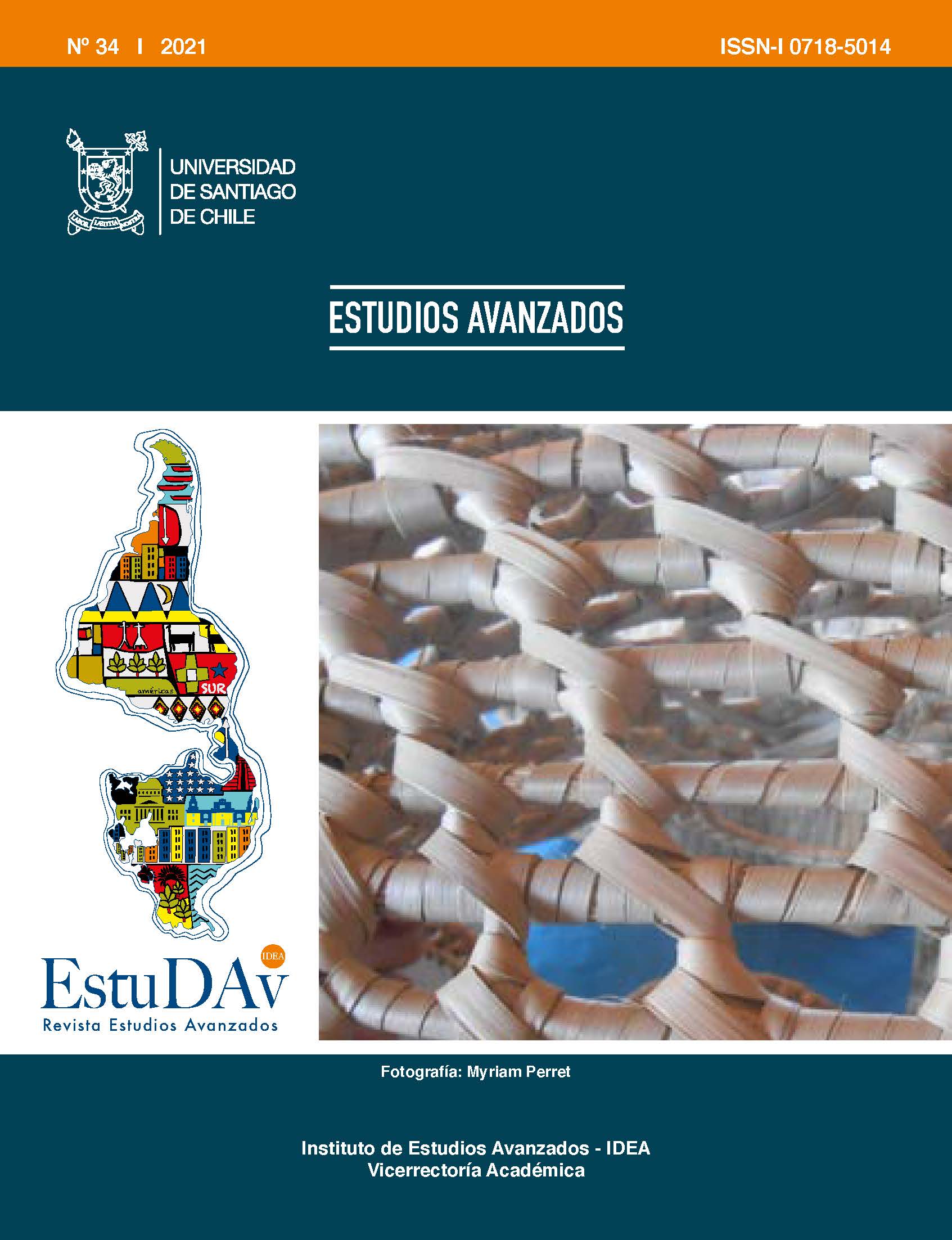Aprendizaje tejido en Chaco, Argentina
DOI:
https://doi.org/10.35588/estudav.v0i34.4828Palabras clave:
aprendizaje, tejido, Chaco, entramado, mercantilizaciónResumen
Se analizará el proceso de aprendizaje que atañe a tejedoras de tres colectivos de los pueblos wichi y qom, en las localidades de El Sauzalito, Misión Nueva Pompeya y Fortín Lavalle, y su relación con agentes de fomento artesanal y con tejedoras de las ciudades de Resistencia y Corrientes, en Argentina, aplicando el método etnográfico. La recolección de la información, en alternancia con periodos de sistematización y reflexión sobre el material reunido, transcurrió entre agosto de 2012 y agosto de 2018. Varios elementos participan en la fabricación de un tejido para vender. En la mezcla, la tejedora se involucra al punto de encontrarse en parte en ese tejido que hizo. Mirada, pensamiento, movimiento y sentir se destacan en este hacer, que a la vez que hace tejido hace a la tejedora. Y el propio paso a paso del tejer tiene una cualidad normativa que adelanta el tipo de forma a desarrollar, aunque no sin combinarse con una búsqueda, con un deseo.
Descargas
Referencias
Benedetti, C. (2014). La diversidad como recurso. Producción artesanal chané destinada a la comercialización e identidad. Buenos Aires, Antropofagia.
Buckwalter, AS. y Litwiller de Buckwalter L. (2013). Vocabulario toba. 2da. edición. En http://www.chacoindigena.net/Materiales_files/Vocabulario%20Toba.pdf (consultado el 20/03/2020).
Ingold, T. (2013). Making. Anthropology, Archaeology, Art and Architecture. Londres y Nueva York, Routledge.
______. (2002). The Perception of the Environment. Essays on Livelihood, Dwelling and Skill. Londres, Routledge.
Koschitzky von, M. (1992). Las telas de malla de los wichí/mataco: su elaboración, su función y una posible interpretación de los motivos. Buenos Aires, CAEA.
Messineo, C. (2014). Arte verbal qom. Consejos, rogativas y relatos de El espinillo (Chaco). Buenos Aires: Asociación Civil Rumbo Sur.
Montani, R. (2008a). “Metáforas sólidas de género: mujeres y tejido entre los wichí”. En Hirsch, S. (coord.). Mujeres indígenas en la argentina. Cuerpo, trabajo y poder. Buenos Aires, Biblos: 153-178.
______. (2008b). “La etnicidad de las cosas entre los wichis del Gran Chaco (Salta, Argentina)”. Indiana 25: 117-143.
______. (2007). “Vocabulario wichí del arte textil: entre la lexicografía y la etnografía”. Mundo de antes 5: 41-72.
Perret, MF. (2018). “Mujer y trabajo en la cestería qom en Fortín Lavalle-Chaco-Argentina”. Folia Histórica del Nordeste 32: 57-76.
DOI https://doi.org/10.30972/fhn.0323496
Santos Granero, F. (2013). “Introduction: Amerindian Constructional Views of the World”. En The Occult Life of Things. Native Amazonian Theories of Materiality and Personhood. Tucson, University of Arizona Press: 1-32.
Weil, S. (1951). Ensayos sobre la condición obrera. Barcelona, Nova Terra.











